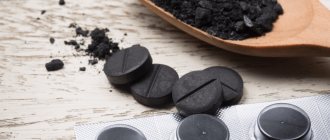Probably, summer is given to us in order to enjoy sunny days, get out into nature, admire its colors, travel and, of course, bask in the rays of the gentle sun. Some people use their summer vacation to visit southern countries, swim in the sea, lie on the beach and sunbathe. But both at home and at a party, one danger awaits us - an allergy to the sun. Why does it occur? How does it manifest? And what should you do if, after being in the sun, your skin suddenly becomes covered with red spots and itches mercilessly?
What is photodermatitis?
A sun allergy has little in common with a true allergy. The disease is caused by increased sensitivity of the skin to sunlight, but as such an allergen, that is, a foreign substance that directly causes the development of a true allergic reaction, does not exist. That is why the processes occurring in the skin during photodermatitis are called pseudo-allergic.
And yet, there are some common points between true allergies and photodermatitis. Substances that provoke the appearance of skin rashes after sunbathing still exist, however, they do not come from the outside, as in a true allergy, but are formed in the skin itself under the influence of ultraviolet radiation and become an irritant to the human immune system.
Clinical researches
The conducted clinical study proves the high efficiency, safety and tolerability of products for daily skin care of children and adults with mild and moderate forms of atopic dermatitis and during remission, accompanied by a decrease in the quality of life of patients. As a result of therapy, a decrease in the activity of the inflammatory process, a decrease in dryness, itching and flaking was noted.
Based on the results of joint research, the following information is placed on product packaging: “Recommended by the St. Petersburg branch of the Union of Pediatricians of Russia.”
Sources:
- Ratner Desiri, Avram M.R., Avram M.M., Procedures in Dermatology. Clinical cosmetology, GEOTAR-Media, 2021.
- Sukolin Gennady Ivanovich, Clinical dermatology. A short guide to the diagnosis and treatment of dermatoses, Notabene, 2017.
- Sukolin Gennady Ivanovich, Illustrated clinical dermatology. Brief alphabetical reference book, Lux Print publishing house, 2010.
Photos of dermatitis
Photo album on the diseaseCosmetics may cause sun allergies
Depending on the mechanism of occurrence, photodermatitis is divided into exogenous and endogenous.
With exogenous photodermatitis, substances located on the surface of the skin act as a trigger. Together with ultraviolet radiation, they cause the formation of allergens in the skin and the appearance of disease symptoms.
The following may act as a “provocateur”:
- sunscreens, especially if they contain para-aminobenzoic acid;
- cosmetics and perfumes;
- essential oils, for example, bergamot oil, St. John's wort, rose, sandalwood;
- dill and parsley juice;
- boric and salicylic acids, phenol, mercury preparations;
- polyunsaturated fatty acids in vegetable oils.
When packing your cosmetics bag for the sea, you should carefully select products and exclude those that can provoke allergies to the sun.
Another example of exogenous photodermatitis is meadow allergy. Its cause is furocoumarins in the pollen of meadow flowers and grasses that settle on human skin.
Folk remedies
After consulting with a specialist, treatment of photodermatosis can be supplemented with traditional medicine procedures.
- To relieve symptoms such as swelling and inflammation, compresses made from grated horse chestnut and carrot pulp are used.
- A decoction of calendula, chamomile and plantain will literally do the impossible; it will not only relieve inflammation, help regenerate the dermis, but also reduce stress. Take an assortment of herbs about 400 g, pour 1 liter of boiling water, leave for about an hour, take 1 glass per day on an empty stomach;
- Burning and itching can be reduced by using lotions with kefir and apple cider vinegar.
- Treatment with herbal baths: currant leaf, chamomile has a beneficial effect on the skin.
- Prepare an ointment based on St. John's wort; it will not only relieve inflammation, but also act as an antiseptic. To make it, squeeze the juice from the flowers, put on the fire and bring until the mass evaporates by half, add butter to the broth in a ratio of 1 to 4;
- To soften the skin and give elasticity to the epidermis, you can use sea buckthorn and peach oil.
- Potatoes, the most beneficial and at the same time cheapest remedy, to use it, grate a small tuber on a fine grater, lubricate the damaged areas with the resulting pulp.
When the causes of photodermatitis lie inside
Endogenous photodermatitis develops under the combined action of sunlight and substances accumulating in human skin.
Their causes may be:
- chronic liver diseases;
- metabolic diseases of hereditary and acquired nature;
- diseases of the adrenal glands and kidneys.
Young children are more likely to develop photodermatitis, when the internal mechanisms of skin protection are not yet formed, as well as people with fair skin.
Many medications cause increased sensitivity to sunlight: Tetracycline, Doxycycline, Amiodoron, Trazicor, Ibuprofen, Aspirin, oral contraceptives, cytostatics and even some antiallergic drugs.
The likelihood of developing a sun allergy increases sharply after cosmetic procedures, such as cleansing, peeling, mesotherapy, contouring, and tattooing.
Read also
Allergic vasculitis
Most often, this is a reaction to the administration of antibiotics, vaccines, contact with perfumes, fuels and lubricants, food intake, and the course of infectious and systemic diseases.
There are various... Read more
Allergy to cosmetics
What are the dangers of cosmetics Adverse reactions to cosmetics are quite common, given their widespread use. The true prevalence of cosmetic allergies is unknown because people who experience...
More details
What is the difference between urticaria and Quincke's edema?
What is the difference between urticaria and Quincke's edema? Quincke's edema is a form of edema in the deep part of the inner layer of the skin and below, which is a life-threatening condition. In some cases this...
More details
Allergic bronchial asthma
What is allergic bronchial asthma Bronchial asthma is a fairly common chronic disease, which in most cases is allergic in origin.…
More details
The concept of secondary immune deficiency
The concept of secondary immune deficiency Immunodeficiency disorders can be congenital or acquired. A congenital or primary disorder is something that a person is already born with. Purchased...
More details
How not to confuse sun allergy with sunburn?
Most often, manifestations of photodermatitis occur with the first rays of spring and worsen after sunbathing throughout the summer.
Typically, from the moment of exposure to sunlight until the appearance of allergy symptoms, it takes from several hours to two days. The rash is preceded by itching of the skin; it can occur already during sunbathing. Then, after about a day, a rash appears on the irradiated areas of the skin. Most often, it has the appearance of urticaria, that is, small tubercles merging into blisters; less often, blisters form, after opening which, erosions remain on the skin, healing after 2-5 days with the formation of crusts, and leaving behind persistent pigmentation. Considering that the whole picture of photodermatitis unfolds against the background of general redness of the skin, it is quite easy to confuse an allergy to the sun with ordinary sunburn. Treatment for these conditions varies, so if in doubt, it is better to immediately consult a dermatologist.
There is also a chronic form of sun allergy, which in its course resembles eczema, accompanied by severe itching. This type of sun intolerance is more common in middle-aged and older men.
Selfie for the doctor
— How are solar urticaria and photodermatoses treated?
— If symptoms occur, you should consult a specialist as soon as possible for differential diagnosis. To confirm solar urticaria and other photodermatoses, phototesting is mandatory. Phototesting is used to determine the range of solar radiation that causes the disease. For photoallergic contact dermatitis, photopatch tests are used with drugs that are suspected of causing this reaction.
Many patients come to an allergist-immunologist or dermatologist when they return from vacation, several weeks after the occurrence of an allergic reaction. In such a situation, it is quite difficult to interpret the symptoms. Therefore, it is advisable to photograph changes in the skin if they occur while relaxing on the beach and contact a specialist in a timely manner.
Treatment also has fundamental differences. For urticaria, use non-sedating antihistamines; for chronic cases, more specialized approaches are possible. Phototherapy is successfully carried out in our clinic; it is an effective method and involves exposure to increasing doses of ultraviolet radiation to develop tolerance. With solar urticaria, severe variants are also possible, including systemic reactions of the body, which may require emergency care. In the case of photoallergic contact dermatitis, it is necessary to exclude the culprit photoallergen, and topical glucocorticosteroids and other drugs are used.
Doctor, is this forever?
Treatment of sun allergies involves eliminating exposure to ultraviolet radiation. In the case of solar urticaria, antihistamines help, and there are special medications that thicken the skin and reduce its sensitivity to sunlight. Treatment in this case consists of gradually accustoming the skin to the sun while taking medication.
To relieve exacerbation of photodermatitis, local treatment is prescribed in the form of ointments, sometimes hormonal, and internal treatment: vitamins B, E, C, nicotinic acid, non-steroidal anti-inflammatory and antihistamines. Usually the course of treatment continues for several days or weeks. During this time, it is recommended to spend less time in the sun, wear a wide-brimmed hat, clothes with sleeves and sunglasses.
If sun allergy is left untreated, repeated episodes will lead to the development of photodermatosis. When you have managed to stop the allergy attack by carefully taking care of protecting your skin, eliminating provoking factors and strictly following the sunbathing regime, you have the opportunity to bask in the gentle rays. Sun allergies can be controlled and prevented, and children may even outgrow this disease.
medkrug.ru
Treatment of solar dermatitis
Obviously, the main thing in the treatment of solar dermatitis in adults is to reduce the main source of the disease - sun exposure. In case of acute symptoms, it is recommended to stay in the shade as much as possible, or better yet at home, completely cover the body with clothes and the face with a scarf. When the symptoms begin to subside, you can begin to sunbathe, but also for a limited time, with great caution.
A complex of drug treatments for solar dermatitis using ointments and other drugs is also prescribed:
- Antiallergic drugs relieve allergy symptoms and reduce the risk of a recurrence;
- Antihistamines that reduce swelling, eliminate the causes of inflammation, normalize blood flow, and reduce pain;
- To avoid the appearance of secondary infections, use antiseptics (Levomikol, Lincomycin ointment);
- Panthenol, Bepanten and a number of other similar ointments and sprays will help restore the skin;
- Antibacterial agents kill microorganisms that have already entered the wounds;
- If the cause of the disease is stress, then it would be advisable to take a course of sedatives;
- Severe forms are treated with hormonal medications. They are characterized by rapid action, but have many contraindications and side effects. Before taking, be sure to consult your doctor.
To treat solar dermatitis, the necessary medications and ointments are prescribed exclusively by a qualified specialist. Consult your physician before using homemade products.
Solar dermatitis: ointments for treatment
At home, to treat the symptoms of solar dermatitis, special ointments are prescribed: (Skin-cap, Bepanten, Protopic, Epidel, etc.) they are used to relieve itching and irritation of an allergic nature. The name of ointment-based drugs may vary. The most commonly used cream is Desitin, Fenistil gel, Elidel cream, Dexpanthenol, Psilo-balm and other ointments and gels that relieve negative manifestations on the skin, as well as itching.
Ointments such as Methyluracil and Zinc, which dry out the skin well and have an antiseptic effect, received good reviews from patients. As a rule, these types of ointments can be purchased at any pharmacy chain without a prescription.








